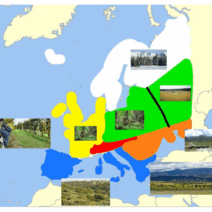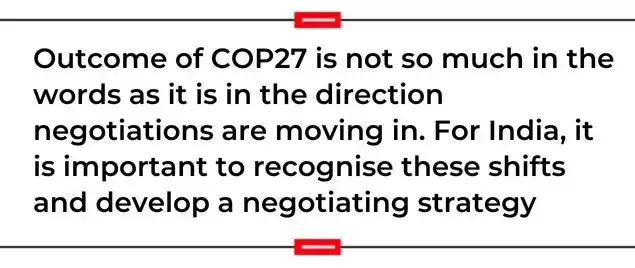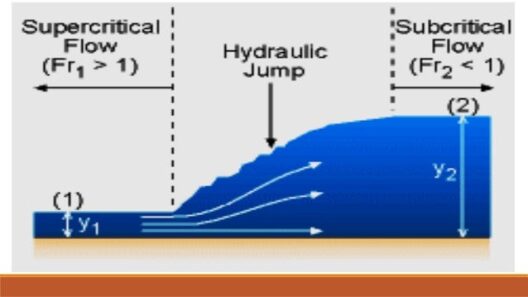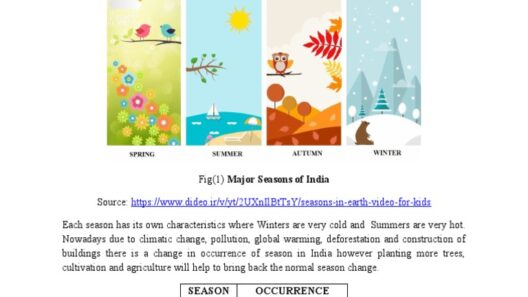Climate variation is an intricate tapestry woven from diverse threads, each one contributing to the ever-evolving narrative of our planet’s atmospheric behavior. While the effects of climate change are widely discussed, the underlying mechanisms that drive these changes often remain in the shadows. So, what causes climate to vary? The hidden forces behind global shifts offer an enthralling challenge to our understanding.
One may first wonder: are we at the mercy of nature’s whims, or do human activities hold sway over these natural systems? To explore this, we must first dissect the fundamentals of climate itself. Climate, distinct from weather, represents the long-term patterns and averages of temperature, precipitation, and other atmospheric conditions over extended periods, typically 30 years or more. Variations in climate can be attributed to both natural phenomena and anthropogenic influences.
Natural forces are myriad, with astronomical phenomena playing a pivotal role. The Earth’s orbit around the sun is not a straightforward path; it experiences variations in shape and angle over thousands of years, known as Milankovitch cycles. These cycles can significantly impact climate, orchestrating glacial and interglacial periods. Additionally, solar output is not constant. The sun’s energy, vital for life on Earth, fluctuates in intensity on various timescales, contributing to temperature variations across the globe.
Moving deeper into terrestrial phenomena, consider the impact of ocean currents. The movement of oceanic waters, orchestrated by winds, the Earth’s rotation, and temperature gradients, is crucial for heat distribution across the planet. For instance, the El Niño and La Niña phenomena represent drastic disruptions in normal oceanic patterns, which can lead to disparate climatic conditions—from severe droughts in some regions to unprecedented rainfall in others. These interactions illustrate the interconnectedness of atmospheric and oceanic systems, which serve as the world’s natural thermostat.
Yet, one might ponder the notion: if natural forces are so influential, how much do we, as a species, contribute to climate variability? Herein lies the crux of a contemporary debate. Anthropogenic factors, specifically the surge in greenhouse gas emissions from industrial activity, transportation, and agriculture, have now become significant determinants of climate patterns. The combustion of fossil fuels releases carbon dioxide, methane, and nitrous oxide into the atmosphere, creating an insulating layer that traps heat—an occurrence commonly known as the greenhouse effect. This imbalance is exacerbated by deforestation, soil degradation, and urbanization, which not only increase emissions but also impair the Earth’s natural carbon sinks.
Another essential factor to consider is the phenomenon of feedback loops. These loops can either amplify or mitigate climate change effects. For example, as temperatures rise, polar ice melts, exposing darker ocean waters that absorb more heat, thereby accelerating warming. Conversely, increased cloud cover due to higher temperatures can reflect solar radiation, potentially counteracting warming effects. Nevertheless, the predominance of positive feedback loops suggests a concerning trajectory for global temperatures.
Geophysical phenomena also warrant attention in our discussion of climate variability. Volcanic eruptions, for instance, release vast amounts of ash and aerosols into the stratosphere, which can momentarily cool the planet by reflecting solar energy away. The eruptions of Mount Pinatubo in 1991 serve as a pertinent example, triggering a notable decline in global temperatures for a few years. Understanding these processes is vital for comprehending short-term climate variations and their long-term consequences.
As we delve further, it becomes increasingly apparent that climate is also shaped by atmospheric dynamics. Wind patterns, driven by temperature gradients, dictate weather systems and precipitation patterns. The jet stream, a high-altitude band of winds, wields substantial influence over weather events, including the development of storms and droughts. Alterations in these patterns due to climate change may lead to unprecedented weather events, raising questions about our readiness to adapt.
However, we must also consider land use and agricultural practices, which profoundly impact local climates. Urbanization creates heat islands, affecting local weather conditions and amplifying temperature extremes. Agricultural practices, such as monocropping and excessive irrigation, can lead to changes in soil moisture and local weather patterns. The challenge lies in finding sustainable practices that balance productivity with ecological preservation.
Throughout this exploration, one fundamental challenge persists: how do we reconcile our existence and development with the health of our planet? With knowledge comes responsibility. Understanding the complex interplay of the factors influencing climate change equips us with the tools to mitigate its impacts. Transitioning to renewable energy sources, adopting sustainable agricultural practices, and protecting our forests are critical steps in this endeavor.
In conclusion, climate variability is an intricate dance of natural and anthropogenic factors, shaped by deep-seated astronomical, geological, and biological processes. Each influence—whether a distant star or a local forest—contributes to the dynamic mosaic of Earth’s climate. As we confront the realities of climate change, understanding these hidden forces becomes imperative. The challenge lies not merely in recognition but in action. How will we adapt? Will we be the stewards of our planet, or will we allow nature’s daunting variability to dictate our fate? The answers we seek will shape our collective future. The time for reflection has passed; the time for decisive action is upon us.








